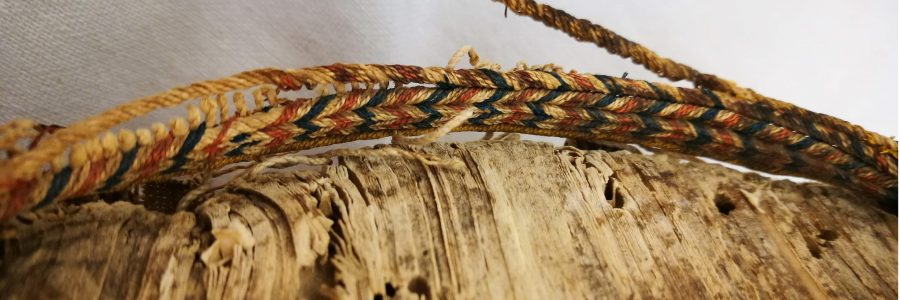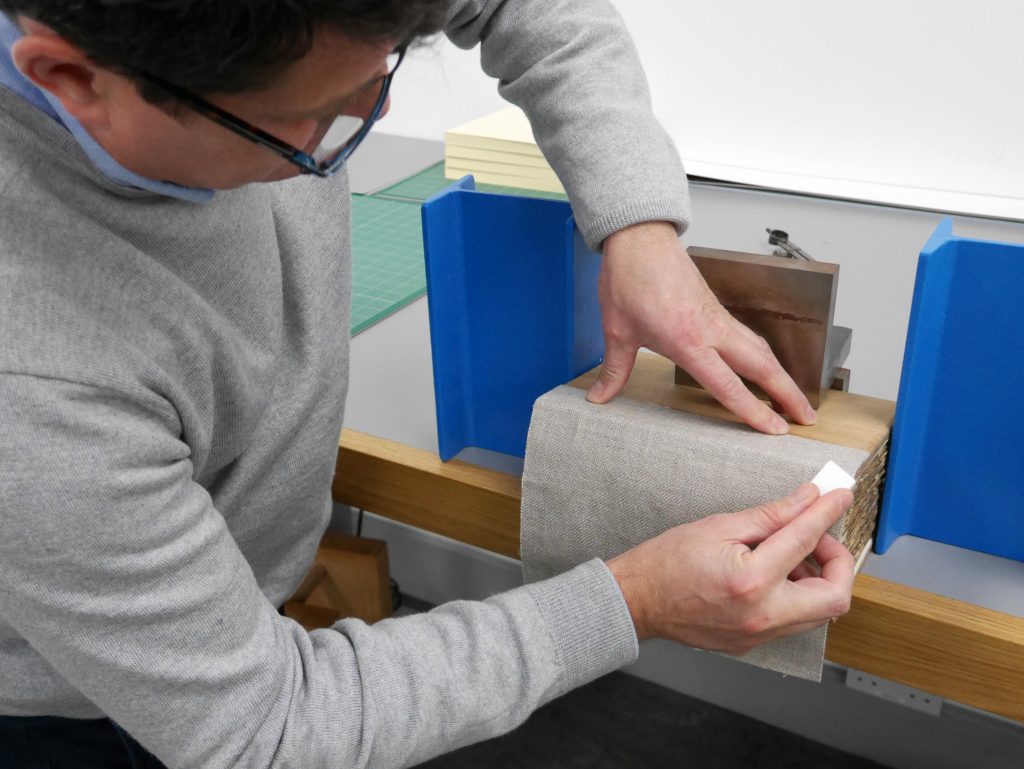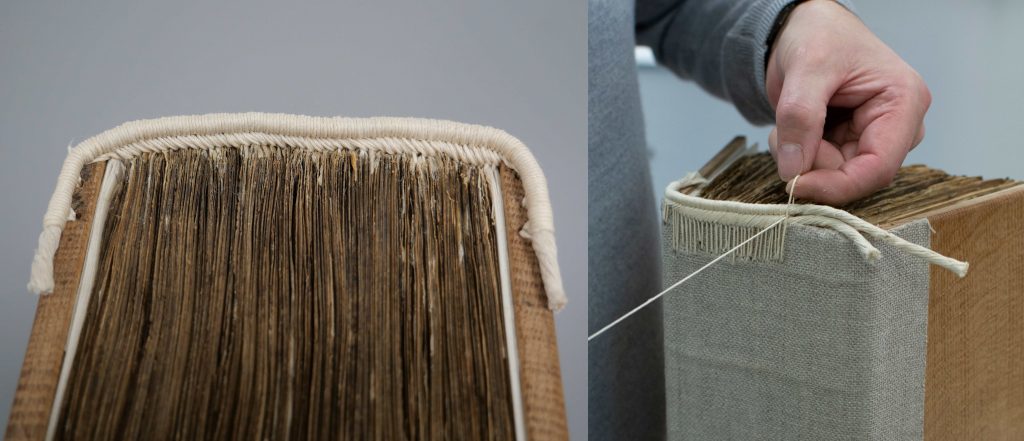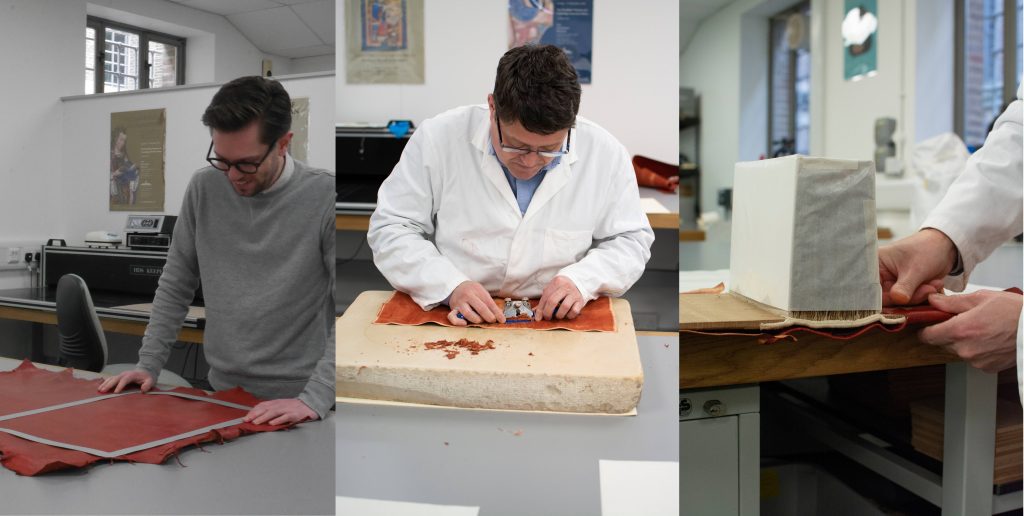
The Polonsky Foundation Greek Manuscripts Project: The conservators’ challenge – Part 4
Welcome to another Polonksy Foundation Greek Manuscripts blogpost. We have an update on the treatment of CUL MS Dd.4.39 an 11th century Psalter and CUL MS Add.1840 a 12th/13th century Evangelion (gospel book). In this post we will be sharing how the conservators lined the spines, sewed the endbands and covered the bindings with leather.

After sewing the books, which we saw in our last post, the spines can be lined. First, the tackets that were put in place to keep the gatherings together during sewing and digitisation are removed. As is the tradition in Eastern Mediterranean style bindings an overall spine lining was used, which is the full height of the spine and extends onto the boards – in this case one third of the way across. Linings are used to support the spine, so when the book is opened the force is distributed instead of being concentrated in one area. For CUL MS Dd.4.39 and CUL MS Add.1840 the lining was made from a fine linen textile and Japanese paper laminated together. On the left you can see Shaun applying the spine lining to CUL MS Dd.4.39.
The next stage of the process is sewing the endbands. The endband style we have chosen is based on a common traditional Eastern Mediterranean style endband – the Greek-on-two-cores endband. This style of endband was sewn on our binding models. The Greek-on-two-cores endband was modified to accommodate the small squares that were required to protect the uneven textblock edges. This was done by using one core, with a simple wind, over the board edges before introducing the second core, and the oblique wind, along the spine of the textblock. The endband cores and the thread are made of linen. Despite appearances these endbands will form an integral part of the book structure, acting akin to an extra sewing support, adding strength and stability.

After sewing the endbands the binding could now be covered. The leather chosen was native dyed tanned goatskin. First, the skin was pared at the edges and at the head and tail of the spine to reduce the thickness where the skin would be turned-in. The adhesive, wheat starch paste, was applied liberally and allowed to penetrate the fibres, then positioned carefully onto the book. The skin was moulded over the spine and boards and the corners were butt mitred. The book was bandaged for a short while to ensure that the skin was secure.

The laminated joint was mitred at the head and tail before being adhered to the inside of the board. The area between the turn-ins of the cover and the joint was infilled using Heritage card (315 gsm). Board sheets were made from Heritage card covered with handmade paper, turned in at the edges, and adhered to the inside of the boards.

The treatment process is complete but that still leaves the housing of the manuscripts, which we will cover in our next blogpost along with a look at the completed bindings themselves! In the meantime look out for #PolonskyGreek posts on Instagram and Twitter.
